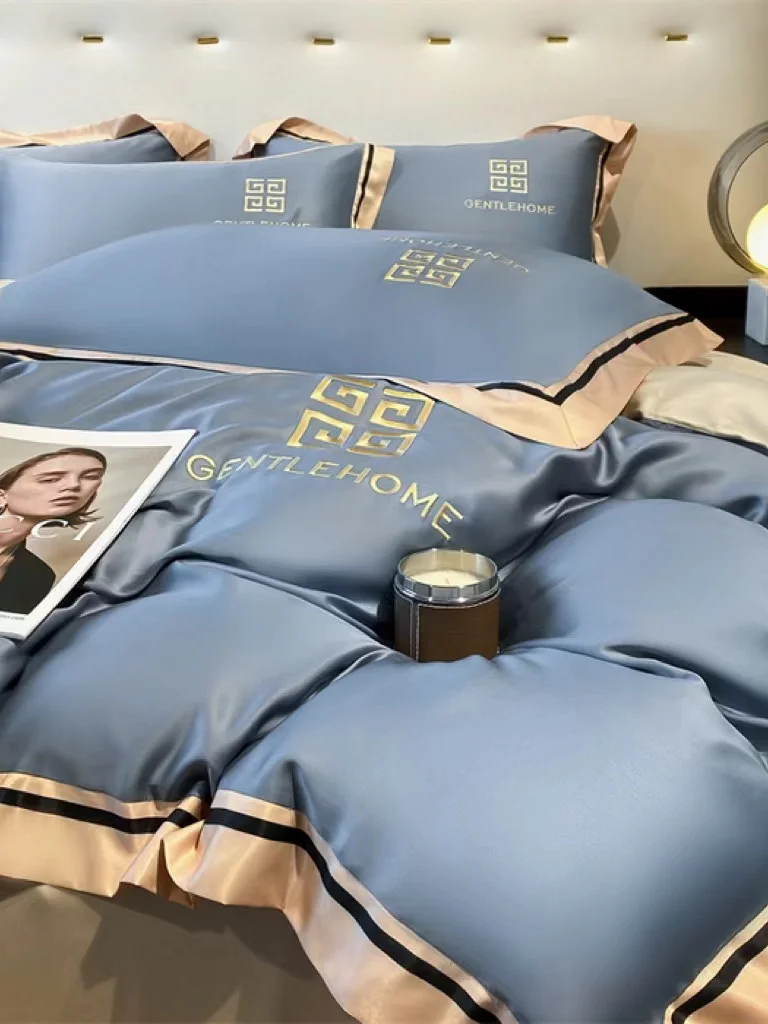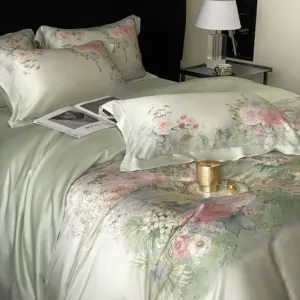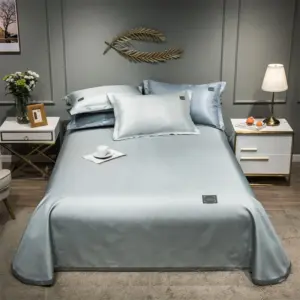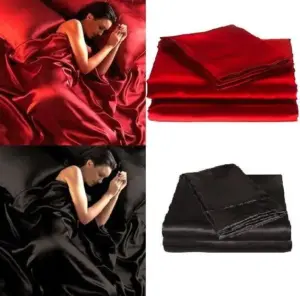Introduction to Eco-Conscious Silk Bedding
Silk has long been treasured for its unmatched luxury and impressive health benefits. The natural fiber’s ability to regulate temperature, wick away moisture, and provide hypoallergenic comfort makes it a coveted choice for quality bedding. Many sleepers discover that silk’s smooth surface helps reduce friction on hair and skin, while its natural temperature-regulating properties create the perfect sleep environment year-round.
However, as awareness grows about environmental impact and ethical production, more consumers are seeking bedding options that align with their values without sacrificing comfort. The conventional silk industry faces scrutiny for its resource-intensive production methods and animal welfare concerns, driving innovation in both sustainable silk production and plant-based alternatives.
Today’s market offers a range of options for the eco-conscious consumer, from ethically harvested peace silk to innovative plant-based textiles that mimic silk’s luxurious feel. The sustainable home goods sector has seen remarkable growth, with eco-friendly bedding emerging as a leading category as consumers recognize the importance of making mindful choices for the spaces where they spend one-third of their lives.
In this guide, we’ll explore the environmental and ethical considerations of traditional silk, examine various sustainable silk options, and introduce remarkable plant-based alternatives that provide similar benefits. Whether you prioritize animal welfare, environmental impact, or simply want to make more responsible purchasing decisions without compromising on luxury, understanding these amazing benefits of mulberry silk sheets and their eco-conscious alternatives will help you create a sleep sanctuary that’s as kind to the planet as it is to you.
Understanding Traditional Silk Production: Environmental & Ethical Considerations
Traditional silk production, while resulting in a luxurious fabric, comes with significant environmental and ethical implications that conscious consumers should consider. The process begins with sericulture—the cultivation of silkworms—which has remained largely unchanged for thousands of years.
Conventional silk production requires extensive resources, particularly for cultivating mulberry trees that feed the silkworms. These plantations often use considerable amounts of water, with some estimates suggesting that producing one kilogram of raw silk requires up to 400 gallons of water. The land usage can be substantial as well, potentially contributing to deforestation in some regions.
The most prominent ethical concern surrounds the fate of the silkworms themselves. In traditional silk harvesting:
- Silkworm cocoons are harvested before the pupae can emerge naturally
- The cocoons are typically boiled or heated with the silkworms still inside
- This process kills approximately 3,000 silkworms for every pound of silk produced
- Each silkworm would otherwise complete its lifecycle and emerge as a moth
The environmental footprint extends beyond cultivation to processing. The conventional silk industry often employs:
- Chemical-intensive degumming processes to remove sericin (the natural gum coating silk fibers)
- Synthetic dyes that may contain heavy metals and other pollutants
- Processes that generate wastewater containing chemical residues
- Treatments that may involve formaldehyde or other potentially harmful substances
Understanding what makes mulberry silk special helps appreciate why it commands premium prices, but this knowledge also raises important questions about how these luxury textiles can be produced more responsibly.
For the eco-conscious consumer, awareness of these issues creates the foundation for making informed choices about sustainable alternatives that preserve silk’s benefits while addressing its environmental and ethical challenges.
Peace Silk: The Ethical Alternative to Conventional Silk
Peace silk offers a compassionate alternative to conventional silk production by fundamentally reimagining the harvesting process. Also known as Ahimsa silk (from the Sanskrit word meaning “non-violence”), this approach allows silkworms to complete their natural lifecycle before the silk is harvested.
The Non-Violent Harvesting Philosophy
Unlike conventional methods, peace silk production waits until the silkworm moths naturally emerge from their cocoons. After the moths break through the cocoon to begin their brief adult life, the empty cocoons are collected for silk production. Though this process results in shorter fiber lengths and slightly different texture characteristics, it provides a cruelty-free option that addresses the primary ethical concern of traditional silk.
Types of Peace Silk
Eri Silk: The Original Peace Silk
Indigenous to Northeast India, particularly Assam, Eri silk has been harvested non-violently for centuries. The silkworms feed on castor leaves rather than mulberry, and the resulting fabric is sometimes called “peace silk” or “non-violent silk.” Eri silk offers exceptional thermal properties with a slightly coarser texture and a more matte appearance compared to conventional silk.
Tussar Silk: Wild-Harvested Wonder
Tussar (also spelled Tussah) silk comes from wild silkworms that feed on oak and juniper leaves. These moths naturally lay their eggs before dying, after which the empty cocoons are collected from forests. The fabric features a natural golden hue and distinctive texture with a rustic, slubbed appearance that many designers prize for its organic character.
Mulberry Peace Silk: Patient Production
This variety uses the same Bombyx mori silkworms as conventional silk but allows them to emerge naturally. While this process results in a broken filament rather than the continuous thread of conventional silk, innovative processing techniques have improved the quality of peace mulberry silk to rival its conventional counterpart.
Peace silk typically requires fewer chemicals during processing and often employs natural dyes, further enhancing its environmental credentials. The resulting fabrics generally have a slightly more textured feel compared to conventional silk’s perfect smoothness, but many consumers appreciate this subtle characteristic as evidence of the fabric’s ethical production.
For those interested in exploring more sustainable silk bedding choices, peace silk represents a meaningful compromise that honors both the luxurious tradition of silk and modern ethical standards.
Organic Silk: Eco-Friendly Cultivation & Processing
Organic silk addresses the environmental concerns of conventional silk production by focusing on chemical-free cultivation and processing methods. This approach creates a healthier ecosystem for silkworms, workers, and ultimately, the end user.
True organic silk adheres to strict standards, most notably the Global Organic Textile Standard (GOTS). This certification ensures:
- Mulberry trees are grown without synthetic pesticides, herbicides, or fertilizers
- Silkworms are raised without antibiotics or growth hormones
- Processing uses only approved low-impact chemicals
- Manufacturing facilities meet strict environmental standards
- Fair labor practices are followed throughout the supply chain
The environmental benefits of organic silk production are substantial:
• Enhanced soil health – Organic farming practices build soil fertility naturally through composting and crop rotation
• Biodiversity protection – Chemical-free cultivation supports beneficial insects and soil microorganisms
• Water quality preservation – No synthetic agricultural runoff contaminates local waterways
• Reduced chemical exposure – Workers and nearby communities avoid contact with harmful substances
• Lower carbon footprint – Organic practices often require less energy and produce fewer emissions
When comparing organic silk to conventional varieties, consumers will find that organic silk maintains the luxurious feel and temperature-regulating properties silk is famous for. The primary differences lie in environmental impact and typically higher price points, reflecting the more labor-intensive cultivation methods and stringent certification requirements.
Many sleepers find that organic silk offers peace of mind alongside physical comfort, knowing their bedding choices support healthier ecosystems. Our mulberry silk bedding sets include options that meet these rigorous organic standards while delivering exceptional sleep quality.
Responsibly Sourced Mulberry Silk: Beyond Basic Sustainability
While organic certification provides important environmental assurances, responsibly sourced mulberry silk embraces a more holistic approach to sustainability that extends beyond chemical usage. This comprehensive philosophy encompasses the entire production journey from farm to bedroom.
Traceability forms the cornerstone of responsible silk sourcing. Leading manufacturers maintain transparent supply chains, allowing consumers to understand exactly where and how their silk is produced. This accountability creates powerful incentives for sustainable practices throughout the production process.
Progressive silk producers implement innovative farming techniques that minimize environmental impact:
• Advanced water management systems that reduce usage by 30-50% compared to conventional methods
• Regenerative agricultural practices that build soil health and capture carbon
• Integrated pest management approaches that reduce reliance on interventions
• Biodiversity initiatives that protect local ecosystems surrounding silk farms
Within production facilities, sustainability initiatives include:
• Renewable energy installations powering manufacturing processes
• Closed-loop water systems that recycle up to 95% of water used
• Zero-waste programs that repurpose silk byproducts into other products
• Energy-efficient equipment that reduces carbon footprint
These responsible practices often earn certifications beyond organic standards, including:
• Bluesign® certification for environmental and consumer safety
• ISO 14001 for environmental management systems
• Cradle to Cradle certification for circular economy principles
• Regional sustainability certifications specific to production areas
The result is exceptional mulberry silk bed sheets that maintain traditional luxury while embracing modern environmental values. Many consumers find that these 100% silk sheets offer the perfect balance of indulgence and responsibility, allowing for guilt-free enjoyment of silk’s remarkable benefits.
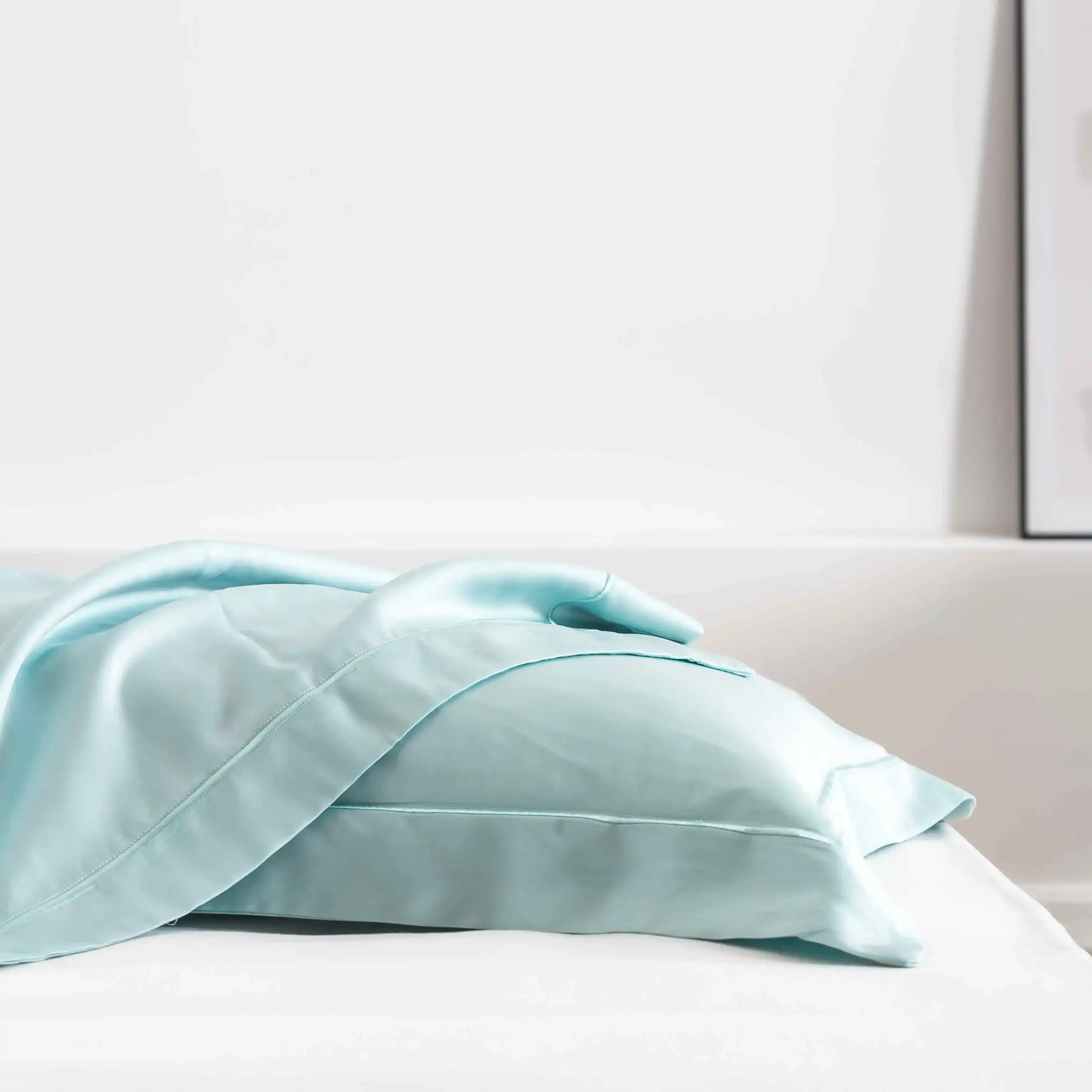
Tencel™ Lyocell: The Premium Plant-Based Silk Alternative
For those seeking a completely animal-free option with comparable luxury, Tencel™ Lyocell emerges as the gold standard among silk alternatives. This remarkable fabric begins its journey as sustainably harvested eucalyptus wood, typically grown on FSC-certified plantations that require minimal water and no pesticides.
What truly distinguishes Tencel™ is its innovative closed-loop production process. Unlike many textiles that generate significant waste, Tencel™ manufacturing recovers and reuses over 99% of the water and solvents employed in production. This closed system dramatically reduces environmental impact compared to traditional textiles.
When comparing Tencel™ to silk, the similarities are striking:
• Exceptional smoothness: The fiber surface rivals silk’s luxurious hand feel
• Natural temperature regulation: Efficiently wicks moisture to maintain comfort
• Breathability: Allows air circulation for cool, comfortable sleep
• Gentle on skin: Smooth fiber surface reduces friction, beneficial for sensitive skin
• Drape: Falls elegantly, creating a sophisticated aesthetic similar to silk
The environmental advantages of Tencel™ are equally impressive:
• Requires 95% less water than cotton production
• Eucalyptus trees grow rapidly without irrigation in most climates
• Biodegrades completely at end of life, unlike many synthetic fabrics
• Production generates minimal carbon emissions compared to other textiles
• Creates no microplastic pollution during washing or disposal
Tencel™ represents an ideal choice for those who want silk’s premium feel with enhanced sustainability credentials. Our collection of eucalyptus silk sheets offers this perfect combination of luxury and environmental responsibility, providing a sleep experience that’s remarkably similar to traditional silk with additional performance benefits.
Bamboo Lyocell: Sustainable Silky Softness
Bamboo-derived fabrics have gained popularity for their silky texture and environmental promise, but not all bamboo fabrics are created equal. Understanding the distinction between bamboo lyocell and bamboo viscose/rayon is crucial for truly eco-conscious consumers.
Bamboo lyocell represents the more sustainable option, produced using a closed-loop process similar to Tencel™. This method recovers and reuses solvents, minimizing chemical waste and environmental impact. In contrast, conventional bamboo viscose/rayon typically employs a chemical-intensive process that generates significant pollution.
The bamboo plant itself offers remarkable sustainability credentials:
• Grows up to 3 feet per day, making it one of the world’s fastest-regenerating resources
• Requires no irrigation, pesticides, or fertilizers when properly managed
• Absorbs more carbon dioxide and produces more oxygen than equivalent tree masses
• Features naturally antibacterial properties that translate to the finished fabric
When properly processed into lyocell, bamboo creates bedding with impressive characteristics:
• Exceptional softness often compared to high-grade silk
• Natural temperature regulation that keeps sleepers comfortable
• Moisture-wicking properties that help maintain dry comfort
• Antimicrobial qualities that reduce odors and extend time between washings
To identify genuine bamboo lyocell rather than conventional viscose/rayon, look for:
- Specific “lyocell” terminology in product descriptions
- Closed-loop processing claims with verification
- Transparent manufacturing information
- Certifications from recognized environmental organizations
Our bamboo silk sheets collection features only properly produced bamboo lyocell, ensuring you receive the most sustainable version of this remarkable silk alternative. These sheets deliver the luxurious feel consumers desire with significantly reduced environmental impact compared to conventional options.
Organic Cotton Sateen: Accessible Silk-Like Comfort
For those seeking a more accessible entry point into eco-conscious bedding with silk-like qualities, organic cotton sateen offers an excellent option. This fabric combines the familiar comfort of cotton with a special weaving technique that creates a smoother surface reminiscent of silk.
The sateen weave structure features more surface threads than traditional cotton weaves, resulting in:
• A smooth, lustrous finish that reflects light similar to silk
• Reduced friction against skin and hair
• Enhanced draping qualities that create an elegant bed presentation
• A slightly weightier feel that provides comforting security
When produced with organic cotton, these sheets offer substantial environmental benefits:
• 91% less water usage compared to conventional cotton cultivation
• Zero synthetic pesticides or fertilizers that harm ecosystems
• 62% less energy consumption during farming
• Improved soil health through sustainable farming practices
• Reduced exposure to harmful chemicals for farmers and factory workers
GOTS certification ensures the highest environmental and social standards throughout production, covering everything from fiber cultivation to final packaging.
While organic cotton sateen differs from silk in some respects (it doesn’t offer quite the same temperature regulation or protein-based benefits for skin and hair), it provides several comparative advantages:
• Significantly more affordable price point
• Easier care requirements with standard washing machine compatibility
• Greater durability for everyday use
• Familiar comfort that many sleepers already appreciate
For optimal silk-like quality in organic cotton, look for:
• Thread counts between 300-500 (higher doesn’t always mean better)
• Long-staple or extra-long-staple cotton varieties
• GOTS certification for genuine organic status
• Minimal processing and natural or low-impact dyes
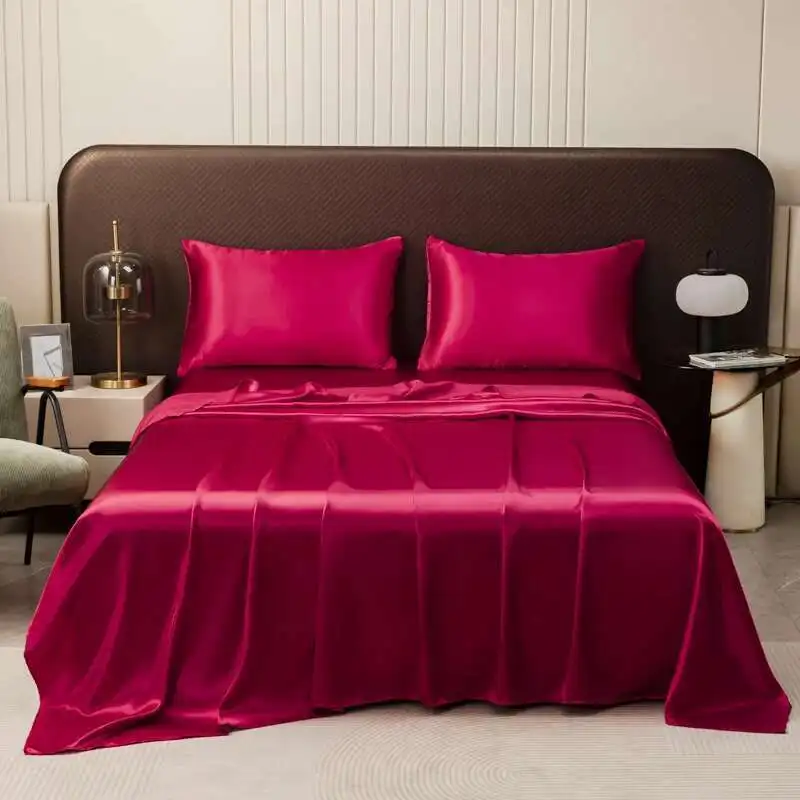
Hemp and Cupro: Emerging Sustainable Alternatives
As sustainable textile innovation accelerates, two particularly promising silk alternatives have emerged: hemp and cupro. These materials represent the cutting edge of eco-conscious bedding options, each offering unique benefits and characteristics.
Hemp: Ancient Fiber, Modern Processing
Hemp stands among the most environmentally friendly crops available, requiring minimal intervention to thrive:
• Uses 50% less water than conventional cotton
• Naturally pest-resistant, eliminating the need for pesticides
• Produces 250% more fiber per acre than cotton
• Improves soil quality through phytoremediation (removing toxins)
• Captures carbon effectively during growth
Modern processing techniques have transformed hemp’s historically rough texture into bedding with remarkably silk-like qualities. Advanced enzymatic softening and cottonization processes create hemp fabrics that offer:
• Exceptional durability (3-8 times stronger than cotton)
• Natural antimicrobial properties
• Outstanding breathability and moisture management
• Increasing softness with each wash
• Natural UV protection qualities
Hemp bedding typically feels slightly crisper than silk initially but develops exceptional drape and softness over time, with a distinctive cool touch that many hot sleepers appreciate.
Cupro: Innovative Upcycling
Cupro represents a triumph of circular economy principles, transforming cotton waste into luxurious fabric. This remarkable material begins as cotton linters—the short fibers surrounding cotton seeds typically discarded during processing.
Through an innovative regeneration process, these fibers become a smooth, flowing fabric with properties remarkably similar to silk:
• Exceptional drape that rivals high-end silk
• Smooth, frictionless surface ideal for hair and skin
• Natural temperature regulation and breathability
• Biodegradability at end of life
• Plant-based composition without animal products
Cupro’s environmental benefits include:
• Upcycling agricultural waste that would otherwise be discarded
• Requiring no additional land, water, or pesticides for raw material
• Closed-loop production systems in modern facilities
• Reduced demand for virgin materials
For consumers exploring vegan silk bedding guide options, both hemp and cupro offer compelling alternatives that align ethical considerations with luxury and performance.
Understanding Certifications for Eco-Conscious Bedding
Navigating the world of sustainable textiles requires understanding the certifications that verify environmental and ethical claims. These third-party standards provide valuable guidance when evaluating bedding options.
| Certification | What It Certifies | Key Requirements | Verification Method |
|---|---|---|---|
| GOTS (Global Organic Textile Standard) | Entire textile supply chain from harvesting to labeling | • Minimum 95% certified organic fibers • Prohibited toxic chemicals • Wastewater treatment • Social criteria enforcement | Look for license number and logo; verify on global-standard.org |
| OEKO-TEX® Standard 100 | Product safety for human health | • Testing for harmful substances • Limits on chemicals even beyond legal requirements • Four product classes with varying stringency | Check certification number on oeko-tex.com |
| Fair Trade Certification | Fair labor practices and community development | • Fair minimum prices • Safe working conditions • Community development funds • Environmental standards | Verify on fairtradecertified.org using certificate ID |
| Bluesign® | Environmental health, safety in production | • Resource productivity • Consumer safety • Air/water emissions • Occupational health/safety | Check partner brands on bluesign.com |
For silk specifically, additional certifications may include:
• Peace Silk Certification: Verifies non-violent harvesting methods
• Soil Association Organic: UK-based standard for organic agriculture
• PETA-Approved Vegan: For silk alternatives that contain no animal products
When evaluating certification claims, consider:
- Scope – Does the certification cover the entire supply chain or just one aspect?
- Verification – Is it third-party verified or self-declared?
- Transparency – Can certification claims be easily verified?
- Relevance – Does the certification address your primary concerns (environmental impact, animal welfare, worker conditions)?
Our vegan silk bedding collection features products that meet rigorous certification standards, ensuring genuine sustainability rather than marketing claims. These certifications provide assurance that your bedding choices align with your values for both environmental and social responsibility.
Material Comparison: Finding Your Perfect Match
Choosing the ideal eco-conscious bedding requires balancing multiple factors including feel, performance, environmental impact, and price. This comprehensive comparison helps identify which option best suits your specific needs and values.
| Material | Feel/Texture | Temperature Regulation | Durability | Environmental Benefits | Price Range | Animal Welfare | Best For |
|---|---|---|---|---|---|---|---|
| Conventional Silk | Exceptionally smooth, cool, lightweight | Excellent – adapts to body temperature | Good with proper care (3-5 years) | Limited – resource-intensive | $$$$ | Poor – silkworms killed during harvest | Luxury seekers less concerned with ethics |
| Peace Silk | Slightly more textured than conventional, still very smooth | Very good – natural temperature control | Good (3-5 years) | Better – often uses fewer chemicals | $$$$$ | Excellent – allows natural moth emergence | Ethical luxury consumers |
| Organic Silk | Identical to conventional silk | Excellent – adapts to body temperature | Good with proper care (3-5 years) | Good – chemical-free cultivation | $$$$$ | Poor/Moderate – still harvests cocoons with pupae | Health-conscious luxury consumers |
| Tencel™ Lyocell | Very smooth, cool touch, excellent drape | Excellent – superior moisture wicking | Very good (5-8 years) | Excellent – closed-loop process, minimal water | $$$ | Excellent – plant-based | Hot sleepers, environmentally conscious |
| Bamboo Lyocell | Extremely soft, cool, fluid drape | Excellent – moisture-wicking, cooling | Good (4-6 years) | Very good – renewable resource, closed-loop | $$$ | Excellent – plant-based | Those seeking silk-like softness, hot sleepers |
| Organic Cotton Sateen | Smooth but not as slippery as silk | Good – breathable but less temperature-regulating | Excellent (5-8+ years) | Good – reduced water usage, no chemicals | $$ | Excellent – plant-based | Budget-conscious consumers, those preferring familiar feel |
| Hemp | Initially crisp, softens with use | Excellent – naturally cooling | Superior (8-10+ years) | Outstanding – minimal water, improves soil | $$$ | Excellent – plant-based | Durability seekers, eco-purists |
| Cupro | Very silk-like drape and smoothness | Very good – breathable and moisture-wicking | Good (4-5 years) | Excellent – upcycled waste product | $$$ | Excellent – plant-based | Fashion-forward consumers, circular economy supporters |
When prioritizing features:
For maximum silk-like feel without animal products:
Tencel™ Lyocell or Cupro offer the closest approximation to silk’s smooth, fluid characteristics.
For best value with eco-credentials:
Organic cotton sateen provides an accessible price point with significant environmental benefits over conventional bedding.
For maximum durability:
Hemp delivers exceptional longevity, potentially lasting twice as long as other options with proper care.
For sensitive skin:
Peace silk, Tencel™, and bamboo lyocell all offer exceptional smoothness and hypoallergenic properties.
For a deeper dive into options, our comprehensive silk bedding alternatives guide provides additional details to help you make the most informed choice for your specific needs.
100% Silk Sheets, Green Silk Sheets, King Size Silk Bedding Set, Mulberry Silk Bedding Sets, Queen Size Silk Bedding Set
Price range: $1,246.21 through $1,615.22 Select options This product has multiple variants. The options may be chosen on the product pageEucalyptus Silk Bedding Sets, Eucalyptus Silk Sheets
Price range: $360.24 through $393.60 Select options This product has multiple variants. The options may be chosen on the product page- Price range: $267.82 through $306.55 Select options This product has multiple variants. The options may be chosen on the product page
Bamboo Silk Sheets, Cooling Silk Sheets
Price range: $130.76 through $177.80 Select options This product has multiple variants. The options may be chosen on the product page100% Silk Sheets, King Size Silk Bedding Set, Mulberry Silk Bedding Sets, Queen Size Silk Bedding Set, White Silk Sheets
Price range: $1,000.79 through $1,351.42 Select options This product has multiple variants. The options may be chosen on the product pageBamboo Silk Sheets, Queen Size Silk Fitted Sheet
Price range: $230.24 through $297.88 Select options This product has multiple variants. The options may be chosen on the product page
Maximizing Longevity: Care Tips for Eco-Conscious Bedding
Proper care not only extends the life of your eco-conscious bedding but also enhances its sustainability by reducing the frequency of replacement. Each material requires specific maintenance to preserve its qualities and minimize environmental impact.
Silk Varieties (Peace, Organic, Conventional)
• Hand wash in cold water with pH-neutral, enzyme-free detergent
• Alternatively, use washing machine’s delicate/silk cycle with mesh laundry bag
• Never use bleach or fabric softeners, which damage silk fibers
• Air dry away from direct sunlight to prevent yellowing
• Iron on low heat with a cloth barrier if necessary
• Store in breathable cotton bags, never plastic
Tencel™ and Bamboo Lyocell
• Machine wash in cold water on gentle cycle
• Use mild, biodegradable detergent without brighteners
• Avoid fabric softeners that coat fibers and reduce breathability
• Tumble dry on low heat or air dry
• Remove promptly from dryer to prevent wrinkles
• Iron on low heat if necessary
Organic Cotton Sateen
• Wash in cold or warm water (not hot) to prevent shrinkage
• Use plant-based detergents without optical brighteners
• Tumble dry on medium heat
• Remove promptly to minimize wrinkles
• Iron as needed on cotton setting
Hemp and Cupro
• Wash hemp in cold water; cupro can handle cool to warm
• Use gentle, natural detergents
• For hemp, expect softening with each wash
• Air dry both fabrics when possible, or tumble dry on low
• Hemp may benefit from occasional line-drying in sunlight for natural whitening
For all eco-conscious bedding, consider these environmentally friendly laundry practices:
• Use concentrated, plant-based detergents to reduce packaging waste
• Install a microfiber filter on washing machines to capture any synthetic fibers
• Wash full loads to maximize water efficiency
• Consider water-saving front-loading machines
• Line dry when possible to eliminate dryer energy consumption
Individuals with mulberry silk sheets for sensitive skin should be particularly careful to avoid harsh detergents or fabric softeners, as chemical residues can irritate skin and negate the hypoallergenic benefits of these specialty fabrics.
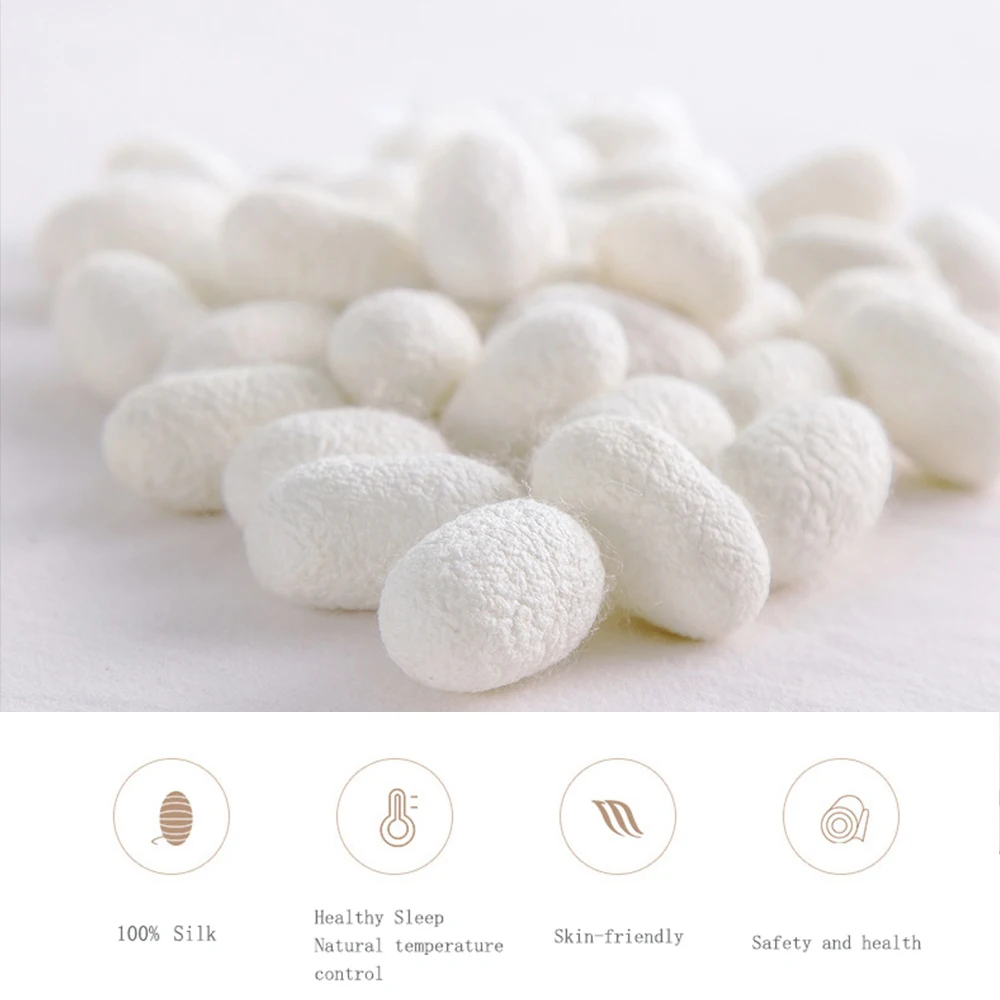
How to Shop for Truly Eco-Conscious Bedding
Navigating the marketplace for genuine eco-conscious bedding requires knowledge and vigilance. Use this checklist to identify truly sustainable options and avoid greenwashed products:
Questions to Ask Brands
• About Certification: “Which specific third-party certifications verify your sustainability claims?”
• About Materials: “What percentage of your product contains certified organic or sustainably sourced materials?”
• About Processing: “How do you minimize chemical usage, water consumption, and waste in production?”
• About Supply Chain: “Can you trace your materials from farm to finished product?”
• About Labor Practices: “What standards ensure fair treatment and safe conditions for workers?”
Recognizing Greenwashing Red Flags
• Vague terms like “eco-friendly” or “natural” without specific explanations
• Environmental claims without third-party certification
• Focus on one sustainable aspect while ignoring other harmful practices
• Excessive green packaging with unsustainable product inside
• “Eco-conscious collections” that represent a tiny percentage of overall offerings
What Transparent Brands Willingly Provide
• Detailed material specifications with percentages of sustainable content
• Specific information about production processes and facilities
• Clear certification information with verification numbers
• Transparent pricing that reflects true sustainable production costs
• Educational content about their environmental initiatives and challenges
Look beyond the marketing to evaluate the complete picture. A truly sustainable product considers environmental impact at every stage from raw material sourcing to packaging and shipping. Our luxury silk bedding sets exemplify this holistic approach to sustainability without compromising quality or comfort.
Remember that genuine sustainability often comes with higher costs, reflecting fair wages, careful material sourcing, and environmentally responsible processing. While the initial investment may be greater, the extended lifespan of quality eco-conscious bedding often provides better long-term value while minimizing environmental impact.
Common Questions About Eco-Conscious Silk Bedding
Is peace silk truly cruelty-free?
Peace silk improves significantly upon conventional silk by allowing moths to emerge naturally before harvesting cocoons. However, some vegans note that commercial peace silk operations still involve captive breeding and human intervention. Wild peace silk (like some Tussar varieties) offers the most hands-off approach, though production scale is limited. Most ethical consumers consider peace silk a meaningful improvement over conventional methods.
How much should I expect to pay for genuine eco-friendly silk?
Quality eco-conscious silk typically costs 20-50% more than conventional silk, reflecting sustainable farming practices, ethical labor standards, and certification costs. Queen-sized peace silk or organic silk sheet sets generally range from $250-500, depending on momme weight and certification standards. Plant-based alternatives like Tencel™ or bamboo lyocell typically cost $150-300 for comparable quality.
Can sustainable alternatives truly match silk’s feel and benefits?
Modern sustainable alternatives come remarkably close to silk’s signature characteristics. Tencel™ and cupro most closely approximate silk’s smooth drape and temperature regulation. While no alternative perfectly replicates all of silk’s protein-based properties, many people find that the environmental benefits of alternatives outweigh these subtle differences. Some alternatives even offer advantages like improved durability and easier care.
Will organic silk last as long as conventional silk?
Properly maintained organic silk typically lasts just as long as conventional silk—about 3-5 years with regular use. The absence of chemical treatments actually helps preserve silk protein integrity over time. The primary factors affecting longevity are momme weight (fabric density) and proper care rather than organic versus conventional production methods.
How can I verify sustainability claims beyond certifications?
Look for brands that provide detailed transparency about their supply chain, manufacturing processes, and material sourcing. Request specific information about farms or factories involved in production. Research the company’s overall sustainability commitment beyond single products. Companies truly committed to sustainability generally share their ongoing challenges and improvement goals rather than making perfect claims. Our guide to natural dyes for silk bedding demonstrates this transparent approach to sustainable production practices.

